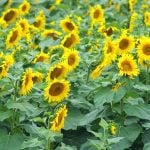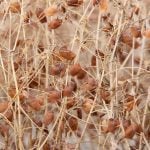A new Habitat-friendly winter wheat ecolabel program aims to boost the profile of winter wheat as the crop provides crucial habitat for a declining species of duck — the northern pintail.
“(Northern pintail) ducks that nest in winter wheat are 24 times more successful than those that choose to nest in spring-sown cereals,” said Karli Reimer, a communications specialist with Ducks Unlimited Canada.
“This is because field operations are greatly reduced during peak nesting periods in the spring due to the fall-seeded nature of winter wheat,” she added.
Reimer, alongside Daniel Ramage, director of market access and trade policy at Cereals Canada, and Doug Martin, a winter wheat grower from East Selkirk, announced the new ecolabel at Fort Whyte Alive in Winnipeg on November 2.
The label is a partnership between Cereals Canada, Ducks Unlimited Canada, and Prairie Winter Wheat Growers. It aims to highlight the environmental benefits — namely bird and wildlife habitat — that products made from winter wheat provide.
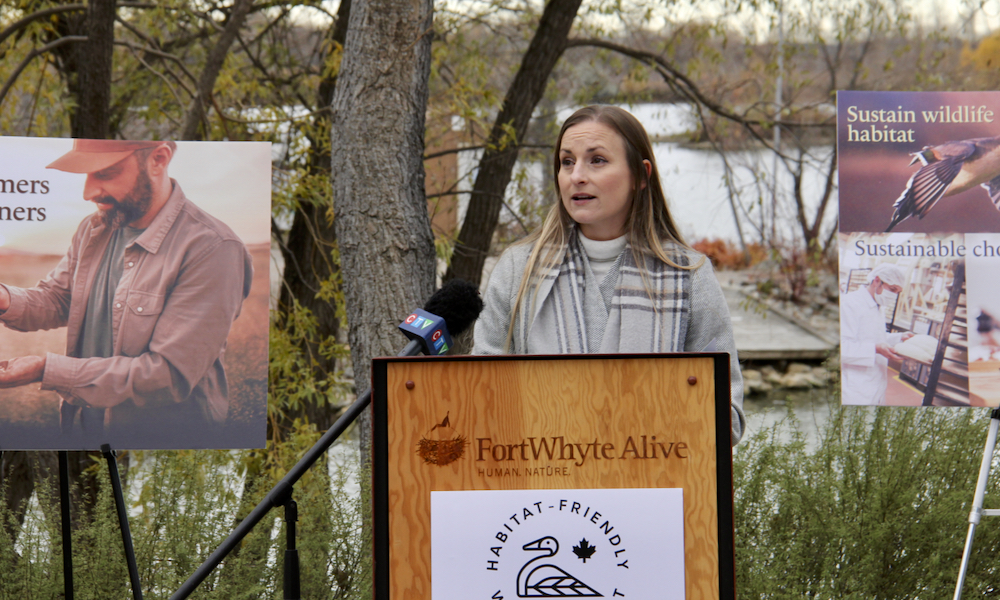
Reimer told media that Ducks Unlimited noticed pintail numbers were declining back in the 1970s due largely to habitat loss.
Pintail numbers continue to decline.
Female pintails typically nest on the ground in low or sparse vegetation and farther from water than other ducks, according to Ducks Unlimited.
The hens lay an average of seven to nine eggs, and incubate them for 22 to 24 days. When the ducklings hatch, the hen leads them to water within 24 hours.
If the nest is destroyed, the hen may rebuild and lay more eggs, but few will renest more than twice.
Since winter wheat is already in the ground and growing in spring, it makes an “attractive green blanket” for pintails to nest in, Reimer said. Field activity is lower than spring-sown crops, so the hens are less likely to be disturbed before their ducklings hatch.
However, winter wheat acres have declined on the Prairies. Total acreage was 312,000 acres in 2020, versus a high of 1.3 million acres in 2014-15.
Some of those acres have been replaced by hybrid rye, with nearly 100,000 acres of hybrid rye planted in Manitoba in fall 2019.
Fall and hybrid ryes are also good habitat for birds, Reimer said.
“As long as there is, you know, good growth in the springtime early on when they’re coming to nest that they can help hide their clutch of eggs from predators and find a good nesting site,” she told the Co-operator.
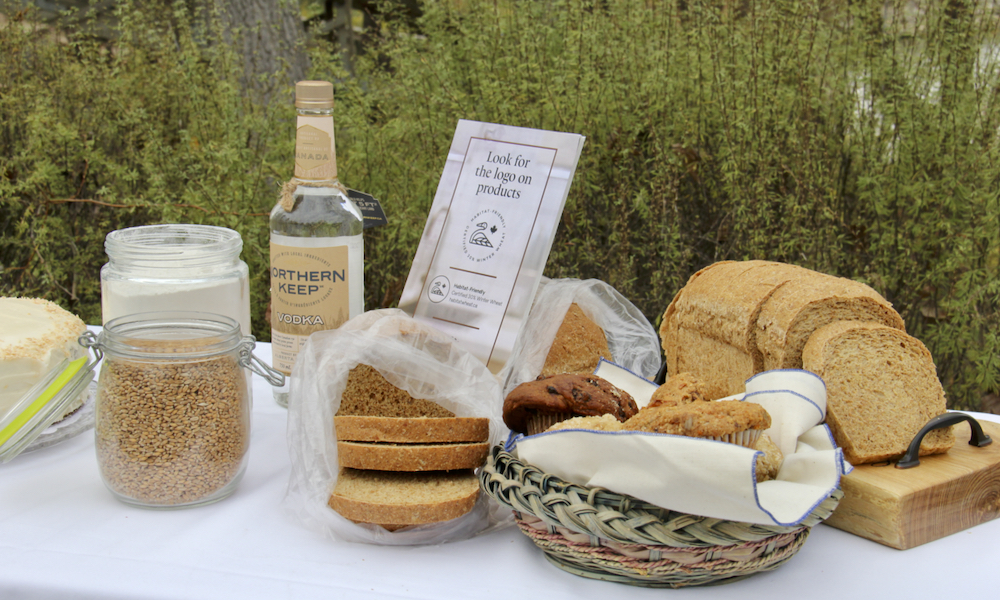
The ecolabel is intended to boost winter wheat’s profile among food processors as a sustainable ingredient, thus ostensibly creating demand.
“At the heart of it, this is a market development project,” Ramage told the Co-operator.
Two companies have thus far joined the program, including Quebec specialty mill Les Moulins de Soulanges and distiller Beam Suntory, which will use winter wheat for its Northern Keep Vodka.
The group is actively looking for more food companies to join.
The companies are buying winter wheat from the marketplace at market price. There is no premium for farmers associated with the label.
The program leverages existing Canadian variety classifications, Ramage explained. The certification confirms that wheat used belongs to the Canadian Western Red Winter class.
Read Also
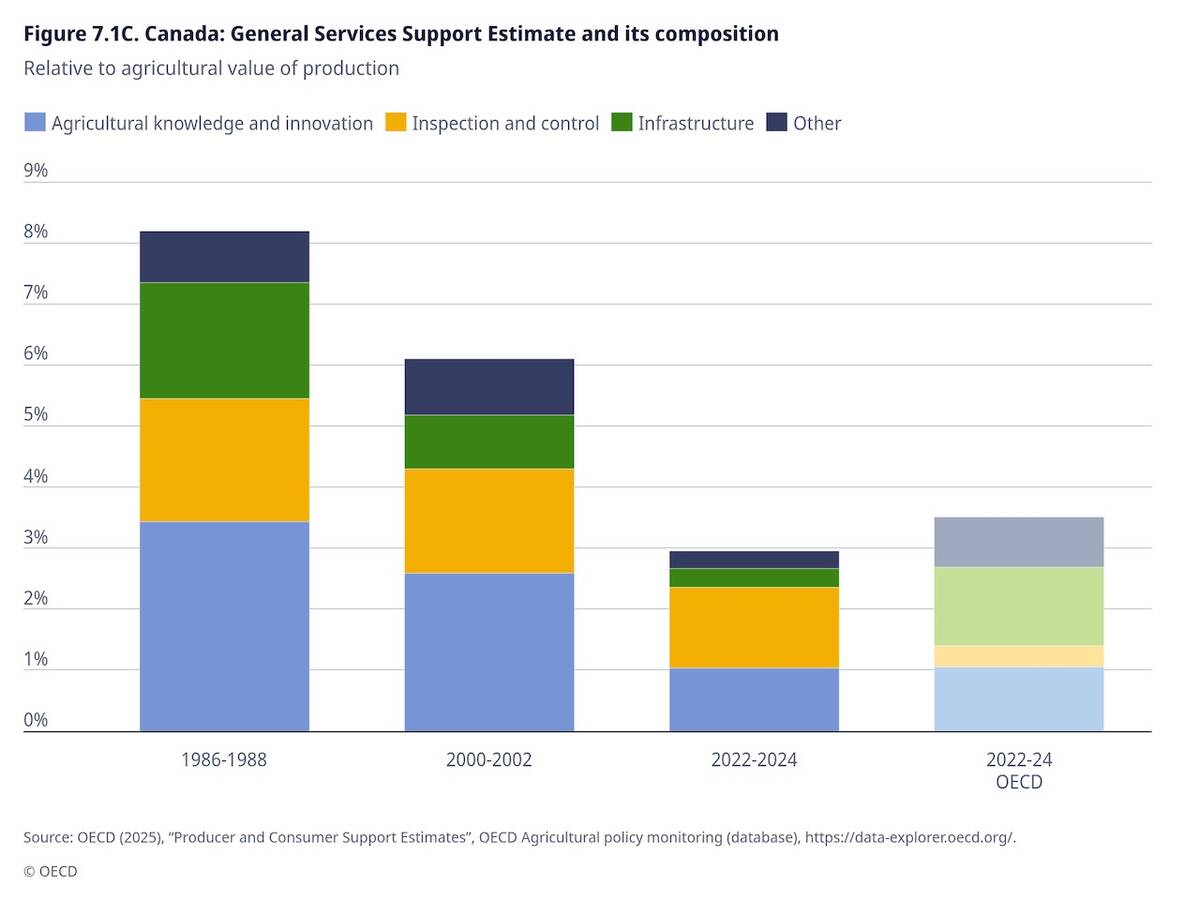
OECD lauds Canada’s low farm subsidies, except supply management
The Organization for Economic Co-operation and Development says Canada’s farm subsidies are among the lowest, but still criticized supply management industries like dairy, poultry and eggs.










